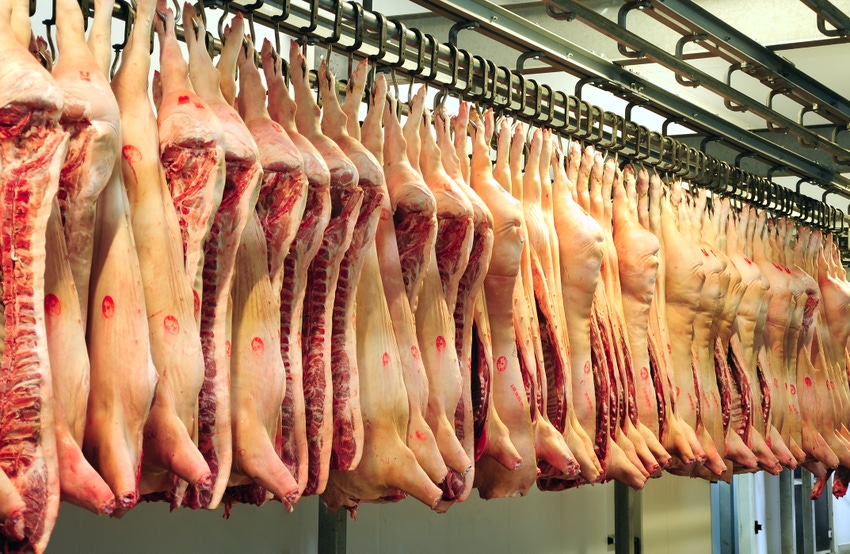Demand for hams and bellies driving hog prices
Continued strong pork demand, winter weather disruptions kept prices higher in February.

Continued robust demand for pork and hogs, along with winter-weather-related production reductions, kept prices year-over-year higher in February, according to the latest U.S. Department of Agriculture's “Livestock, Dairy and Poultry Outlook.”
USDA economist Mildred Haley pointed out that estimated federally inspected hog slaughter last month was about 10.4 million head, almost 3% below February 2020. This reduction was largely due to nasty winter weather conditions in Midwestern States, with processing slowdowns likely to be mostly recouped in March. Estimated federal -inspected pork production last month was 2.3 billion pounds, more than 1% below a year ago, with reduced slaughter numbers partially offset by estimated dressed weights of about 218 pounds per head, almost 3 pounds heavier than a year ago.
According to the report, February prices for live equivalent 51-52 percent lean hogs averaged $53.93 per hundredweight (cwt), 33% higher than February 2020 and almost 14% above January 2021 average prices. Strong hog prices in February were driven in large part by on-fire pork prices, Haley noted.
The February wholesale value of the pork cutout was $88.34/cwt., more than 36% higher than a year ago, and 10% higher than January 2021 average wholesale carcass values. The hams and bellies were the primary sources of the strong wholesale pork prices in February, according to Haley.
According to USDA, the year-over-year percent changes in the wholesale prices of the ham and belly are illustrative of the strength of processor demand, particularly for these cuts. USDA price data show that the average value of the February ham primal was $78.33/cwt., almost 36% higher than a year earlier. The value of the belly primal averaged $146.52/cwt. in February, almost 96% higher than a year ago.
“These price increases are attributable to continued-strong consumer pork demand─for these cuts in particular—at the same time that pork production was slowing a bit due to winter weather conditions hindering pork processing,” Haley said.
She further suggested that low levels of pork cold stocks are another likely factor in strong early-year pork carcass values.
January ending cold stocks, at 460 million pounds, were almost 27% below year-earlier levels. This level was attributed to COVID-19-related processing sector turbulence in Spring 2020. Typically, Haley said that ending January cold stocks calculate to almost 25% percent of January pork production. In January 2021, however, cold stocks were about 19% of estimated January federally inspected pork production.
“It is notable that the two primal values driving increases in the average wholesale carcass cutout— hams and bellies—account for a significant share of the year-over-year reduction in January pork cold stocks.”
The January data show that the year-over-year difference in ham and belly stocks together account for 42% of the 166 million-pound decline from year-earlier total pork cold stocks. The other primals together accounted for about 29% of the year-over-year decline in January cold stocks. USDA data show ham stocks in January were about 84 million pounds, almost 27% lower than a year earlier. Belly stocks, at about 31 million pounds, were 60% lower than at the end of January 2020.
Haley said expectations for modest increases in pork production this year, combined with continued firm demand, reduces the chance that pork cold stocks will build to pre-COVID-19 levels in 2021.
About the Author(s)
You May Also Like





